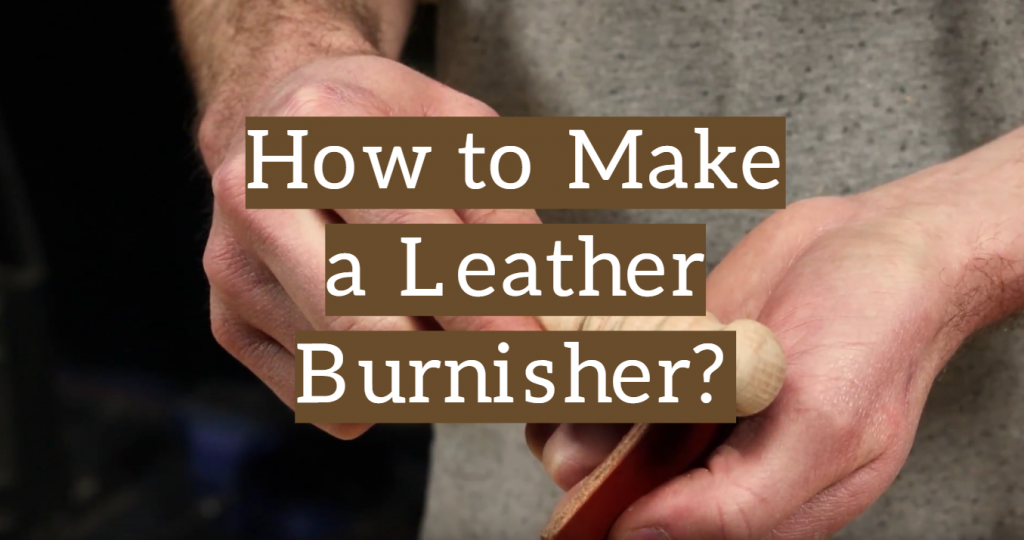
Slicker is using to polish the skin of the butt. The attractiveness of the product increases when processing the hem after stitching. Polishing the hem of allows you to close the pores of the skin. This is necessary in order to eliminate the ingress of moisture. Such processing of the hem avoids contamination and prolongs the life of the product. Often, buffing is done with wax.
Burnishers use different methods for a particular type of treatment. Different chemicals are also applied to the hems.
Slickers are manual and mechanical. Roller nozzles on the drill for polishing the edges are popular. Such attachments should be used for large volumes of work. Hand burnisher will be enough when working with leather at home.
 Perfect for Dremel rotary tool, drill press, hand drill, lathe, or any other motorized tool. Simply wet the edge of the Leather and then add either saddle soap or glycerin for a fine burnished edge.
Perfect for Dremel rotary tool, drill press, hand drill, lathe, or any other motorized tool. Simply wet the edge of the Leather and then add either saddle soap or glycerin for a fine burnished edge.
Slicker has grooves for different skin thickness. Convex parts can be useful when extruding a solid pattern. Slickers are made of different materials, but wood is considered the best and simplest. Hardwood tools last much longer and are more expensive. The polisher is able to serve for many years under the condition of proper use.
Such burnishers are used to buff the hems of leather goods. This refers to vegetable tanned leather. Another technology is used to treatment chrome leather. Make a polisher at home is easy. This requires a machine and wood.
Slicers in the form of nozzles on the drill are convenient to use. They significantly accelerate the skin treatment and reduce the likelihood of defects.
Detailed instructions will tell you how to make a wooden leather burnisher
-
- You should take a medium-sized wooden bar to get started. Cut a 3-4 cm long segment from the bar. This will be quite enough for making a small wooden nozzle for a drill. The size of the bar needs to be made larger if you need a full-sized polisher.
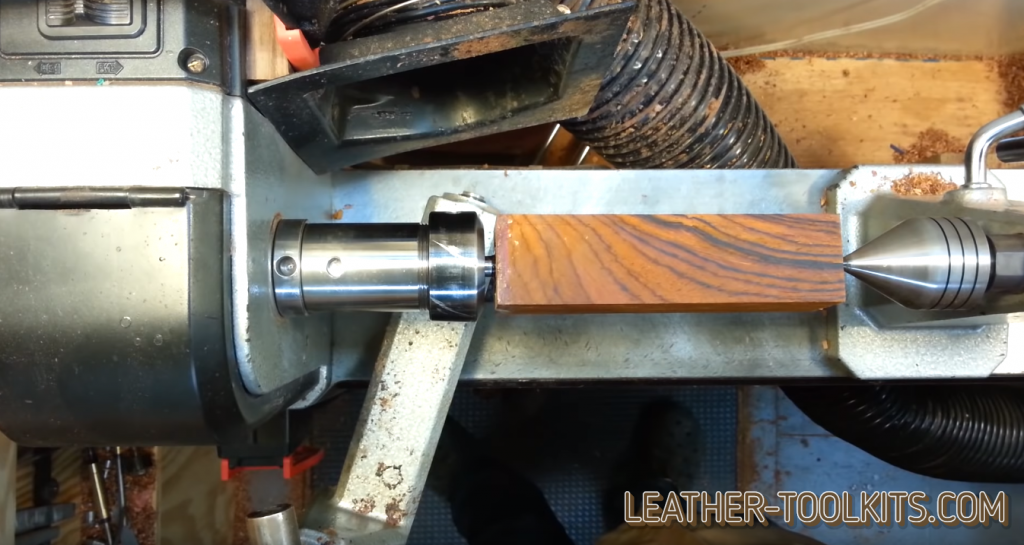
-
- You should draw a circle on the end of the resulting small bar. The diameter of the circle should match the diameter of the desired slicker. Saw a wood cylinder along the marked circle using the jigsaw. To obtain a perfectly smooth billet in this process is almost impossible. Harvesting will require refinement.
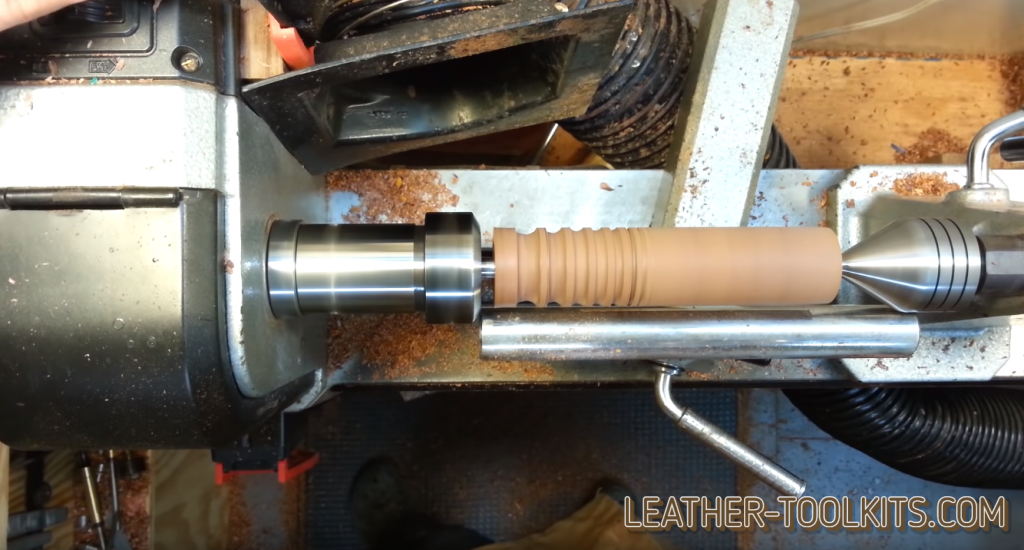
-
- The next stage of work will be the search for the center of the resulting harvesting. You need to hold two diagonals. The point of intersection of these lines will be the center of the circle.
- Drill a hole in the resulting point. Next, you need to pick up the metal pin, which will act as an axis. The used drill head is ideal for this purpose.
- The metal pin in the hole should be fixed with reliable glue. It is necessary to give time for drying. The harvesting on the metal axis should be inserted into the hole of the drill and tighten the special lock.
- The drill must be turned on at low speed. Processing the hem of the must be done with emery paper. This will smooth out irregularities after processing with a jigsaw. The surface should be smooth and even.
- The needle file will be necessary for the next stage of work. You must make profiles (grooves) of different widths by applying a needle file to the workpiece. Furrows of various sizes allow the skin to be processed in various thicknesses.
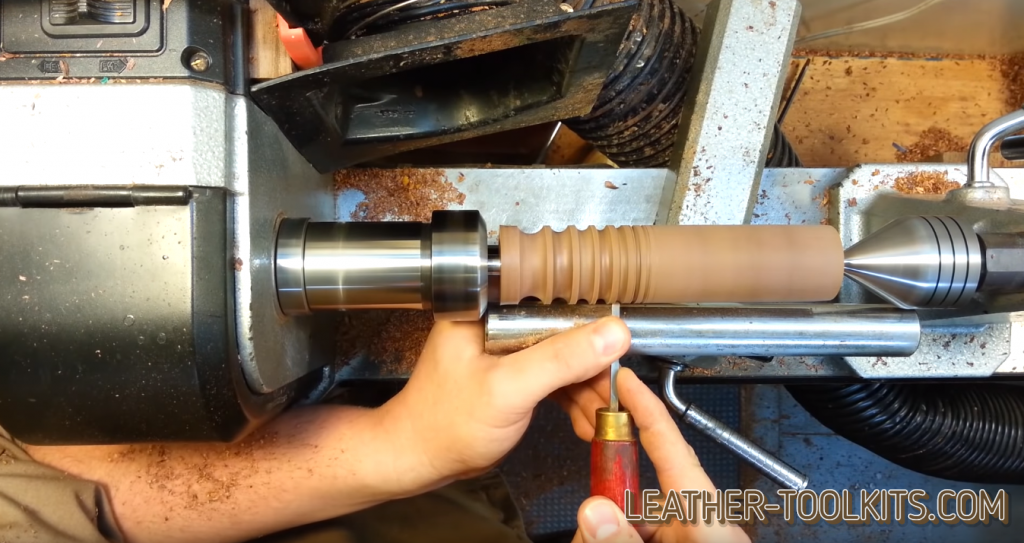
-
- Furrows should be treated with fine sandpaper to eliminate roughness and irregularities. It is most convenient to perform such an operation at low revolutions of the drill. You can achieve an almost glossy surface through the use of sandpaper of varying hardness. This will not use varnish or any other coating for processing the workpiece. This treatment will avoid defects in the processing of the edge of the leather product.
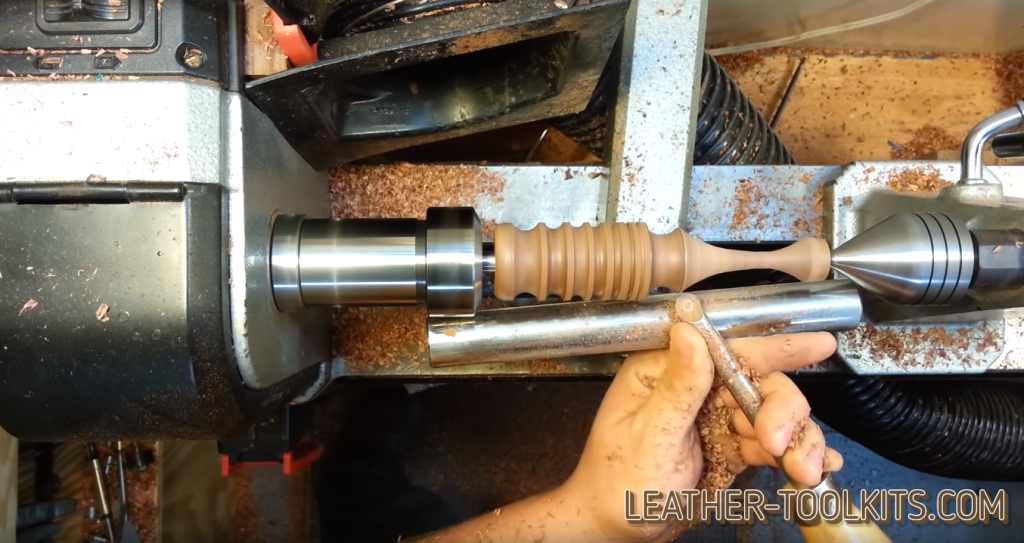
Hem processing by slicker includes several steps:
-
-
- Edge must be cut with a sharp knife before processing. You also need to round the hems with a special tool.
- Then we grease the edges with a special gel or just with water. Use a brush to create a thin layer.
- We select the hole of a suitable size and with pressure stretch the skin through it. The hem should touch the wood. A few seconds is enough to buffing the hem.
- Now you can paint (optional). The final buffing of the is done manually with a denim or other similar fabric. It is not advisable to use a slicker, since it is possible to melt or overheat the hem coating.
-
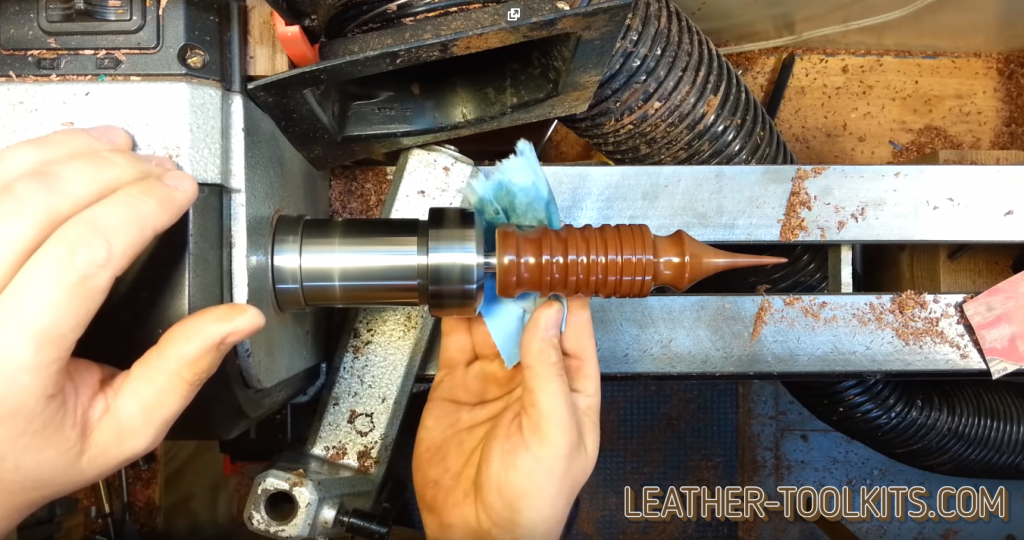
Skin polisher is best made from Cocobolo. This breed of wood has increased strength and resistance to overheating. Cocobolo does not crack during operation. Wood also contains an increased amount of oils which helps with polishing. Juniper is well suited for this purpose. You can use oak logs as a substitute.
 Perfect for Dremel rotary tool, drill press, hand drill, lathe, or any other motorized tool. Simply wet the edge of the Leather and then add either saddle soap or glycerin for a fine burnished edge.
Perfect for Dremel rotary tool, drill press, hand drill, lathe, or any other motorized tool. Simply wet the edge of the Leather and then add either saddle soap or glycerin for a fine burnished edge.
The quality of processing the edges of leather goods depends on the tanner’s tools. An uneven cut or rough edge will spoil the look of the product and make it unusable. There are many ways to arrange the edge with high quality and neat. The simplest and most popular method is to use a slicker.
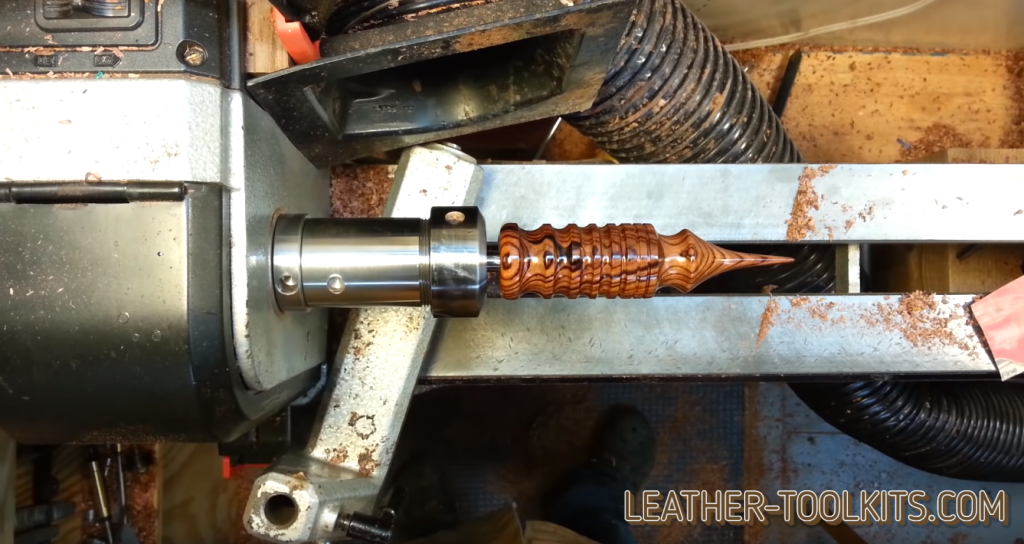
Manual or mechanical polisher will make the edge of the leather product smooth and eliminate the penetration of moisture.
Polishers made of metal, plastic or another material can be purchased in stores. If you want to create a polisher yourself, this is not a problem. A small piece of wood and a pair of tools will help you with this.
References:
https://www.goldbarkleather.com/sourceblog/2015/12/29/a-basic-guide-to-burnishing
https://www.instructables.com/Wooden-Leather-Burnisher/
https://leatherworker.net/forum/topic/34077-diy-harbor-frieght-leather-burnisher/

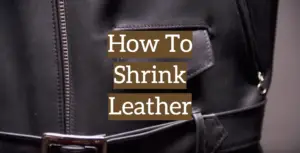
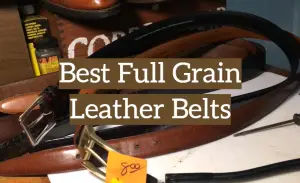
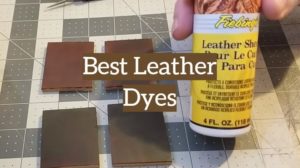



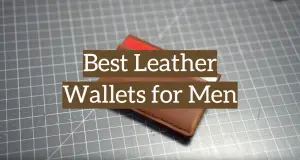


An excellent method of making your Leather Burnisher. This is awesome, and I will need to make one for myself. I think traditionally you would still use some form of sealer in conjunction with burnishing. From what I’ve read, it seems the best method is to coat the edge in a sealer, such as gum tragacanth, and then shine it. The heat from the burnishing motion heats the gum trag and bonds it with the leather creating a smooth sealed edge.
Thanks for your clever instructable.
Hello, John! Thanks for your comment!